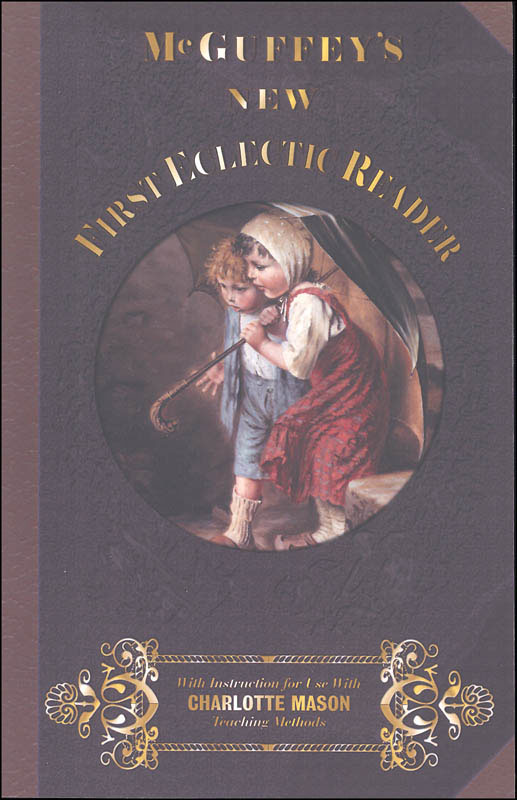This charming little first reader begins with the alphabet, presented in upper- and lower-case formats. Carefully chosen engravings (pictures) provide memorable clues to letter sounds, making the illustrated alphabet useful for quick reference.
Beginning with the very first lesson, students practice spelling short words, then reading the resulting sentences. These simple first sentences begin by using two-letter words to form questions and answers, allowing the student to learn in context right from the beginning. As a result, they begin to see how word order can change meaning.
Before the first lesson is a Pronouncing Exercise, a simple list of the words to be studied. In each lesson where new words are introduced, a similar list is provided. This makes it easy to present new letters, sounds, and words, or to use the words in a spelling quiz.
At the beginning of the lesson, McGuffey instructs the teacher to "Let the child spell each word in the line, then read the line. I have provided more details about how to do this at "Practice Spelling with McGuffey Readers. Each lesson will be practiced this way, unless different instructions are provided or you choose to approach the lessons differently.
An introduction has been added with instructions for using Charlotte Mason methods with the readers.
You may also choose to use Charlotte Mason's language arts methods of copywork, recitation, and narration for these lessons. Instructions for each of these methods is found in the new 18-page introduction that has been added to this edition. Like Miss Mason, Mr. McGuffey believed in short lessons, learned well, so the readers provide a convenient source for material to use with Miss Mason's methods.
Features of the first reader
In the preface to the first reader, the original publisher of the 1857 edition describes the book's features:
* The Reading Lessons are of the most simple character, commencing with easy and familiar words of two letters, and gradually advancing, step by step, to those of three, four, and letters, including simple words of two syllables.
* The Spelling Lessons are carefully graduated in the same manner, and are so connected with the reading matter, as materially to aid the little learner in reading, as well as afford valuable practice in spelling.
* The Engravings in the present revised and enlarged edition of McGuffey's New First Eclectic Reader, are all new; and have been designed and executed by one of the first artists in country, expressly for this series. These engravings are highly attractive, and, in their character and arrangement, are calculated to aid the learner in understanding the lessons which they illustrate.
By the end of the first reader, your student will be working with two-syllable words, including a few challenging ones such as "laughing and "joyous. Because these words have been presented in context, sounded out, spelled, and heard, students will be better able to remember and understand them.
Literacy, virtue, and values
Like the other readers in the series, McGuffey's first reader helps you teach language arts using stories, poems, essays, and speeches that reinforce virtues such as courage, honor, diligence, stewardship, independence, frugality, perseverance, and kindness. Whether you use them as a primary instructional tool or simply as a supplement to your curriculum, I think you'll find the 1857 McGuffey Readers a valuable addition to your home library and classroom.


